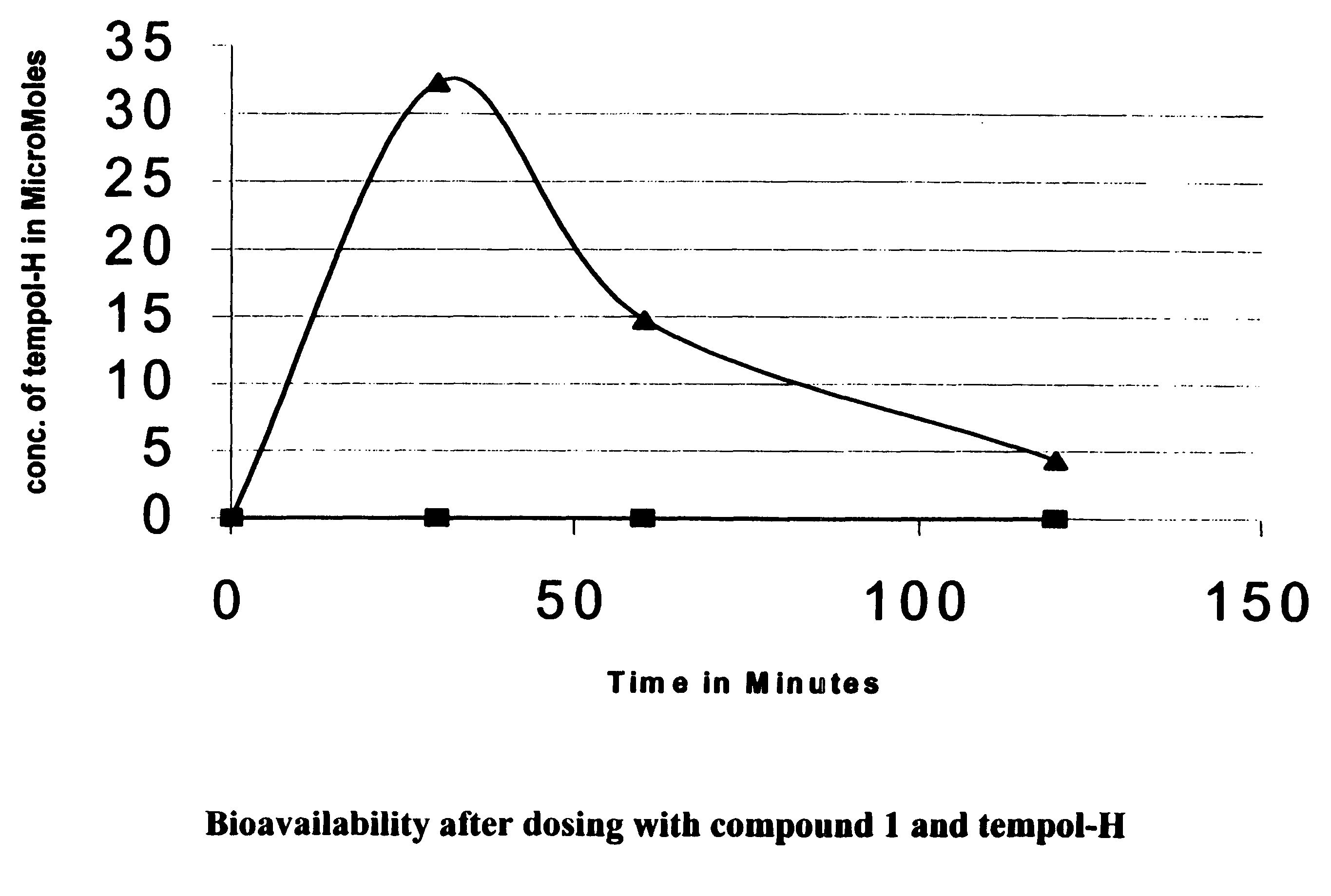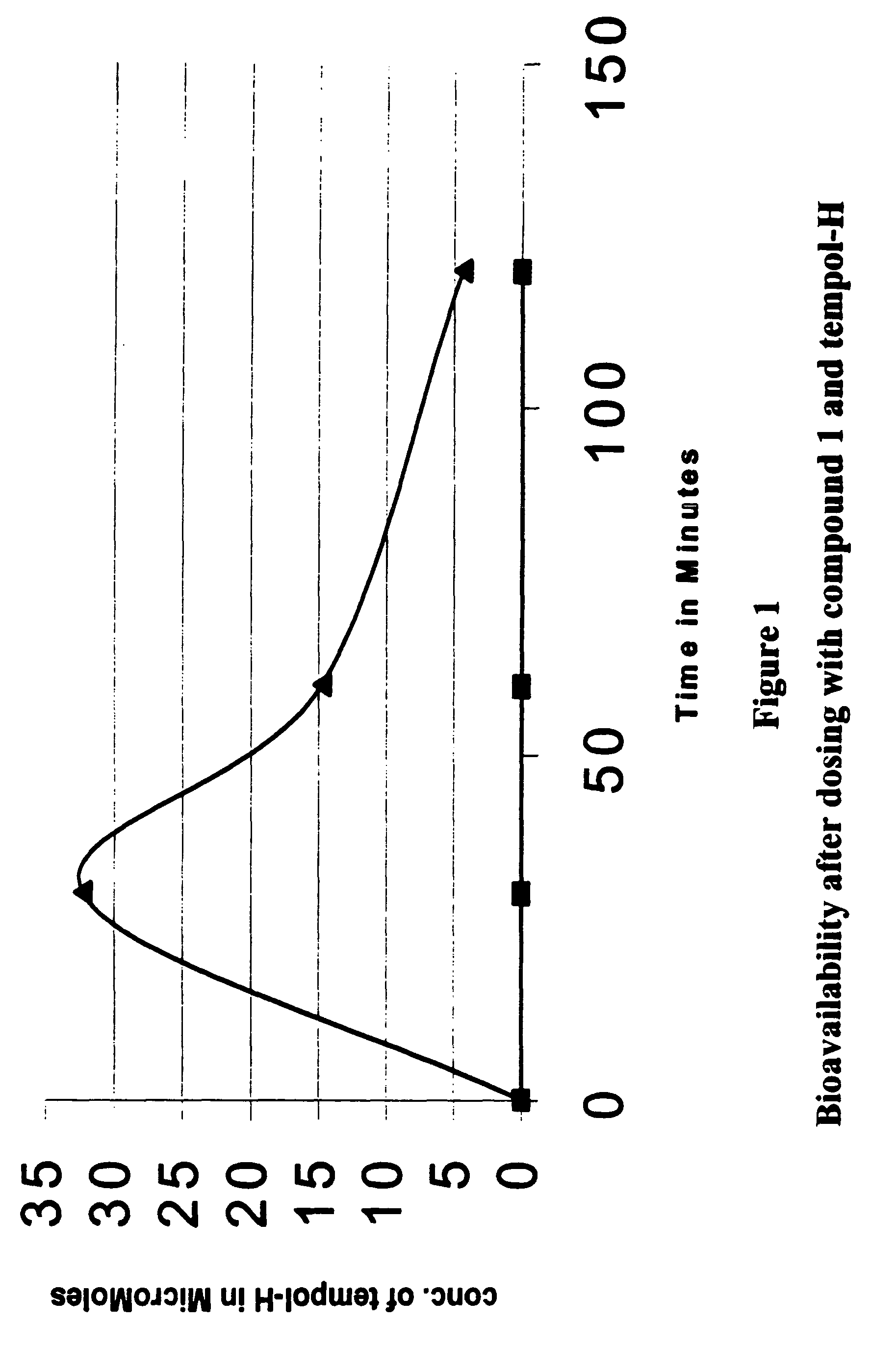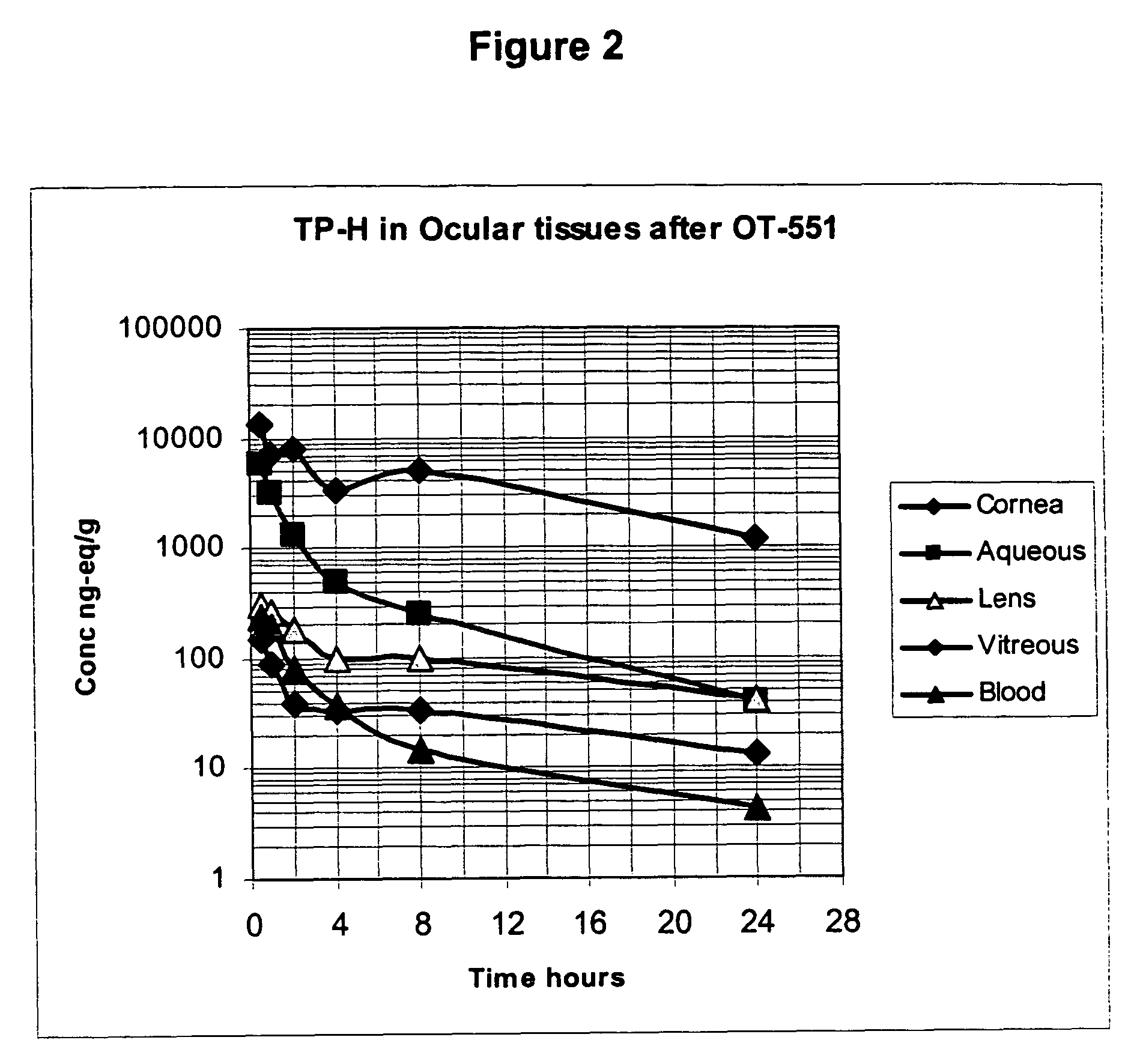Amelioration of cataracts, macular degeneration and other ophthalmic diseases
a technology of macular degeneration and ophthalmology, applied in the field of cataracts and macular degeneration and other ophthalmic diseases, can solve the problems of oxidative tissue damage, ros scavengers, and individual's ability to focus on near objects, so as to stop the development of cataracts
- Summary
- Abstract
- Description
- Claims
- Application Information
AI Technical Summary
Benefits of technology
Problems solved by technology
Method used
Image
Examples
example 1
[0105]Determination of Ester Compound Stability in Aqueous Solution. Method: A 0.1-0.5% solution of the ester compound was prepared in buffer (pH 4.5-5.0) containing DTPA or EDTA. The solution was filled into amber glass vials, which were sealed and placed in a controlled temperature container maintained at 40° C. Sample vials were removed periodically and stored at 0-5° C. until analyzed by HPLC, GC, or GC / MS analytical methods, and found to be stable after 3 months under these conditions.
[0106]To be useful as an anti-cataract drug the agent must penetrate into the lens. This may be included in the method for selecting an anti-cataract compound. A description of method for tempol-H follows:
example 2
Drug Penetration of Organ Cultured Rat Lenses
[0107]In contrast to drugs tested previously as anti-cataract agents, tempol-H and tempol have a remarkable ability to penetrate lens tissue from the surrounding fluid. The experiments described in this section determined the time course, active compound concentrations and compound distribution in the lens, after incubation with rat lenses under the organ culture conditions.
[0108]Method: Rat lenses were cultured as follows: Rat lenses were obtained from Sprague-Dawley rats. The lenses were incubated in 24-well cluster dishes in modified TC-199 medium and were placed in a 37° C. incubator with a 95% air / 5% CO2 atmosphere. The lenses were incubated in 2 ml of culture medium, which was adjusted to 300 milliosmoles (mOsm). Lenses were incubated, for 1 to 24 hours, in the culture medium with 4.0 mM tempol-H, or with 4.0 mM of the oxidized form, tempol. At the appropriate time, the lenses were removed from the medium, blotted dry, homogenized a...
example 3
1-oxyl-4-(3′-ethoxy-2′,2′-dimethyl)propanecarbonyloxy-2,2,6,6-tetramethylpiperidine]
[0112]
undec-7-ene (DBU) (800 mg, 5.26 mmol) and continue heating for 12 h. The reaction mixture was concentrated under reduced pressure. The residue was dissolved in ethyl acetate (100 mL) and was washed successively with 1N HCl, saturated NaHCO3 and brine, was dried over anhydrous sodium sulfate and was concentrated in vacuo to give red colored solid (1.48 g). This was purified by column chromatography on silica gel using cyclohexane:ethyl acetate (8:1) as eluent to give a red colored crystalline solid (1.22 g, 70.0%).
[0113]IR (KBr, cm-1): 1360 (N—O.), 1725 (ester)
PUM
| Property | Measurement | Unit |
|---|---|---|
| partition coefficient | aaaaa | aaaaa |
| partition coefficient | aaaaa | aaaaa |
| partition coefficient | aaaaa | aaaaa |
Abstract
Description
Claims
Application Information
 Login to View More
Login to View More - R&D
- Intellectual Property
- Life Sciences
- Materials
- Tech Scout
- Unparalleled Data Quality
- Higher Quality Content
- 60% Fewer Hallucinations
Browse by: Latest US Patents, China's latest patents, Technical Efficacy Thesaurus, Application Domain, Technology Topic, Popular Technical Reports.
© 2025 PatSnap. All rights reserved.Legal|Privacy policy|Modern Slavery Act Transparency Statement|Sitemap|About US| Contact US: help@patsnap.com



